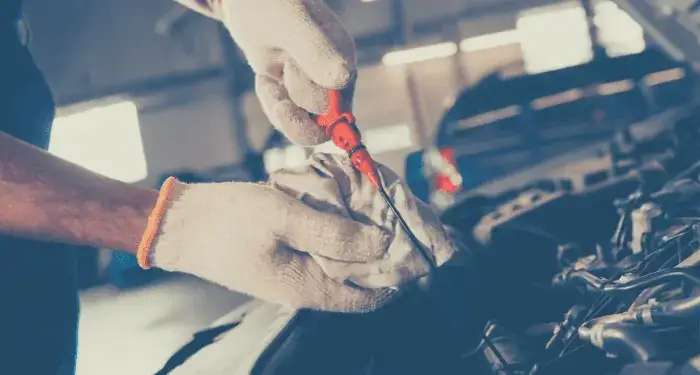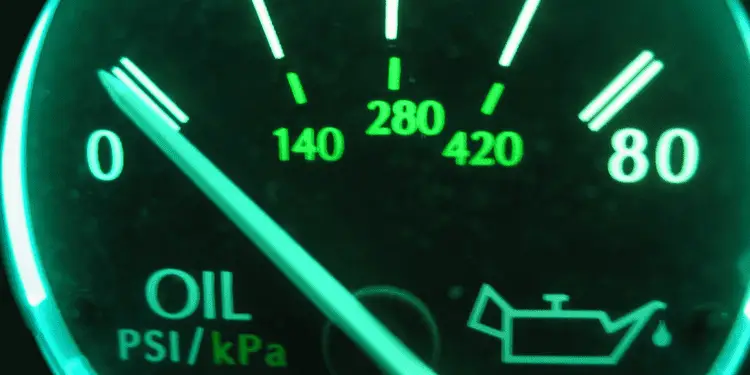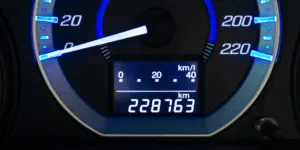Many people don’t maintain their cars per the manufacturer’s guidelines, but not you.
You’ve either changed the oil yourself or had a car shop do it for you. But now what?
Here we’ll answer how long is ideal to let your car run and what else you should do or be aware of after changing the oil.
You don’t have to take your car for a drive once the oil has been changed. It is always good practice to let it run, though. Saying that, a drive around the block is preferable.
Let your car run for two to five minutes after changing the oil. This will allow it to circulate from the oil pan and into the top of the engine, lubricate the camshaft and pistons, and prime the oil pump.
Can You Drive A Car Right After An Oil Change?
It’s best to wait ten minutes before driving after an oil change. This will allow all the oil to lubricate the pistons before settling in the pan. It also ensures that the oil pump has enough oil in the pan to force it up into the block effectively.
Why Do I Have To Let The Car Run?
Leaving your car off and then taking it for a long drive after an oil change means you could miss signs that there has been a mistake in the type or quantity of oil used or that parts have been knocked and may be leaking. More especially if an oil filter has been changed.
It is best to let the car idle for about 30 seconds to a minute before driving to allow the oil to reach all parts of the engine thoroughly.
Many visitors also read this article: Check Engine Light Is On After Oil Change [CAUSES AND FIXES]
Take it easy and drive slowly for the first mile or two after an oil change. This is because the engine is cool, and the oil sinks to the bottom of the pan.
The idea here is to let the car run to check for any faults in a situation that can cause less damage to your car if mistakes have been made.
Should a Car Be Left Running When Adding Oil?
Always have your car turned off when adding oil. This is the same advice whether you are topping up or doing a completely new oil change.
Engine oil can get hot when the engine is running and can spit from the neck of the engine where the filler cap would normally be.
You’ll also lower the oil pressure by doing this, which will mean the oil won’t circulate through your car, making the oil pump work harder than it should.
What To Check For After An Oil Change
Oil Level
Once the oil has been circulated throughout the engine, turn it off and let it settle back down into the oil pan. Remove the dipstick, wipe it, push it fully back into the hole and remove it again. Check the reading. Most dipsticks have two grooves indicating a lower and upper engine oil level.
You should see the oil at – or very close to the upper level. A word of warning, though. Not over the upper limit. We’ll discuss this shortly.
Oil Pressure
Check that the oil light is off after you’ve added the oil. This light will come on whenever there is low oil pressure. Low oil pressure almost always means low oil levels. This could indicate a severe leak too.
Here it’s best practice to let the oil reach its proper operating temperature. This can take 20 minutes. Most cars don’t have an oil temperature gauge, but it’s generally between 250 Fahrenheit to 260 degrees or midway on a non-numerical oil pressure dial.
Oil Leaking
Oil Filter Leaking
We’re assuming that you’ve had the oil filter changed here. If you haven’t, the old oil in the filter will mix with your new oil very quickly and degrade it. If you have changed it, it can leak if it has been cross threaded or not tightened enough.
Oil Filler Cap Leaking
If you see oil leaking here, firstly push it down or twist it on correctly. If it is, then turn off your engine right away.
This is a sign of too much oil in the engine and the increased oil pressure building up within the engine. Losing oil is the least of your potential problems here. The pressure within your engine could blow seals and bend engine rods. This could be very expensive to put right.
Oil Leaking From Dipstick Orifice
A nice easy fix – usually. Just press it down hard into the orifice. You should feel the rubber grommet catch as you do so. If you don’t feel this, inspect the top portion of the stick. The grommet may have become less supple and rubbery and need to be changed. This is unlikely, though.

Additional signs of oil leaks are oil smells, engine overheating, or smoke from the engine.
Many visitors also read this article: The 5 Reasons Your Cars Engine Oil Is Black After Being Changed
Can You Drive Your Car Fast After an Oil Change?
The only issue would be a leak or adding too much oil, causing high oil pressure. Generally, you can drive fast immediately if the change has been completed properly.
Does A Car Feel Different After An Oil Change?
A car will not feel any different. Any perceived change is in your head rather than actually mechanical. We would all like to feel a change for the best when we’ve spent time and money on something, but an oil change won’t give you that.
However, you’ve protected your car from the problems that having old oil in your engine can cause. Older oil increases the chances of overheating as the additives separate from the oil molecules, becoming thicker and not circulating as well as they should.
How Long Does it Take to Build a New Engine Oil Pressure?
Standard oil pressure varies between 25-65 PSI.
Let the engine idle for a few minutes after an oil change to heat the new oil. After an oil change, the new cold oil will require more power to get pumped through the system. This happens when the vehicle has just been started, and the cold oil is thicker.
After a few minutes of start-up, the oil is (ideally) sufficiently heated to flow more easily. This will automatically help calibrate the oil pressure to the vehicle’s ideal level.
It is usually recommended to wait about 10 to 20 minutes after starting the engine to reach this level. This will allow the new engine oil to reach its operating temperature. This pressure allows the oil to reach all of the parts effectively.

At this point, the oil can function well and protect against friction and corrosion. It is also able to perform its cooling and cleaning functions.
What Happens to Old Engine Oil?
A car shop will dispose of old engine oil safely and in line with government and state law. If you’ve done the oil change yourself, most larger companies like Autozone and Walmart will take it for free. If there isn’t one nearby, try Earth911. You can put your zip code in, and it’ll give you information on the closest engine oil recycling centers.
It’s a wise move to change your oil.
Many visitors also read this article: There are many more benefits of getting your oil changed than you may be aware of.
In conclusion
After an oil change, you should ideally keep your vehicle running for two to three minutes. It’s a good idea to let your engine run for a couple of minutes to distribute the new oil to the top of the engine and lubricate the pistons.





![How Long Do New Tires Take To Put On? [ANSWERED] Torque-wrench-tire](https://carzaza.com/wp-content/uploads/2023/12/Torque-wrench-tire-300x150.png)







